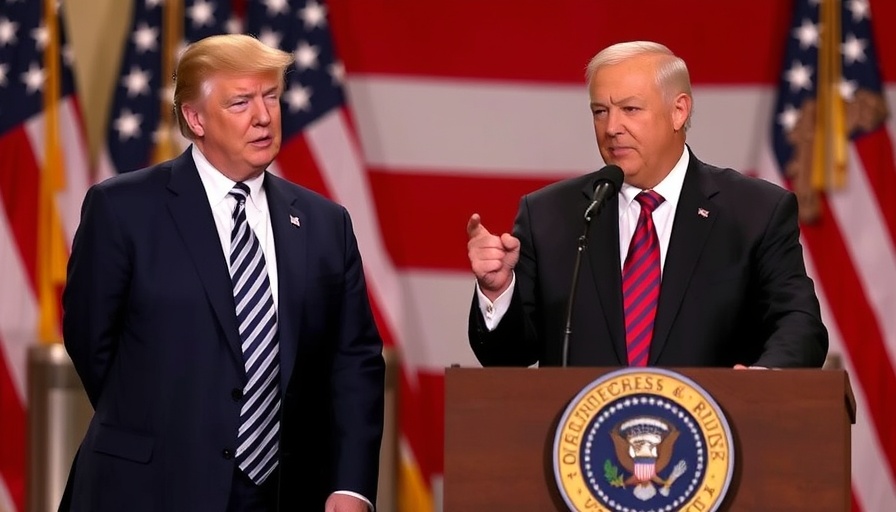
Trump's Redistricting Strategy: A Game Changer for Texas Politics
In a bold move that reverberates through the Texas political landscape, former President Donald Trump has urged state Republicans to redraft congressional district maps. His goal is straightforward: to secure more House seats favorable to the GOP in the upcoming midterm elections. According to sources familiar with the discussions, Trump believes that Texas can potentially flip five additional seats through this redistricting process.
This directive comes as the Texas Legislature prepares for a special session aimed at considering these new congressional maps, a maneuver that aligns with Trump's broader strategy to maintain Republican control in Congress. His previous presidency experienced significant setbacks when Democrats flipped the House just two years in. Now, Trump is adamant about rallying support from the Texas congressional delegation to establish a more robust Republican presence in the state.
Understanding the Context: Redistricting Law In Texas
Redistricting, mandated by the U.S. Constitution every ten years following the census, is intended to ensure equal population distribution across voting districts. While the most recent maps, drawn after the 2020 census, were expected to remain unchanged through the decade, there are legal avenues that allow states to adjust their congressional boundaries outside of the census timeline.
Trump's push for voluntary mid-decade redistricting is somewhat rare, but not unprecedented. Many Democratic-led states face restrictions due to independent commissions designed to prevent partisan gerrymandering. For instance, California, often touted as a Democratic stronghold, cannot redistrict at will because it is bound by the commission framework adopted via a 2008 ballot initiative. This complexity means that while Texas could act, other states may find their hands tied, leading to accusations of unfair advantage.
Implications for Future Elections
The implications of Texas's potential redistricting are profound, not only for Democrats but also for the greater political fabric of the nation. If Texas successfully shifts five districts in its favor, it could embolden Republican-led states to follow suit, potentially leading to a chaotic cycle of defensive redistricting across the country. California Governor Gavin Newsom has already hinted at possible retaliatory measures, stating, “Two can play this game.”
This back-and-forth could lead to a return to aggressive and strategic districting practices that many thought were on their way out. Thus, understanding the nuances of redistricting is vital for both parties as it can tip the balance of congressional power.
Public Sentiment and Local Reaction
Public opinion on gerrymandering and redistricting tends to fluctuate. While many see redistricting as a necessary process to ensure equal representation, others view it as a manipulation tool by the political elite. Texas residents, concerned about their electoral influence, may be wary of changes that could skew their representation in Congress. Moreover, grassroots organizations advocating for fair representation could mount significant campaigns to counteract partisan-driven reconfigurations.
In light of these developments, Texas voters should remain vigilant and informed about how these changes could impact their local and national representation.
What Can Voters Do?
As strategic redistricting looms, voters play a crucial role in shaping the narrative around representation. Engaging in local politics, attending town hall meetings, and advocating for transparency in the redistricting process are vital steps for residents to take. By raising their voices, Texans can hold legislators accountable and ensure their interests are represented regardless of partisan maneuvers.
The Broader Picture: What's Next for the GOP?
Trump's insistence on redistricting is not just a regional play but a part of a national strategy aimed at regaining lost ground for the GOP. As stakes grow, the redistricting efforts in Texas could set the tone for future elections across the United States. Observers should keep a close eye on how this unfolds, as it may have lasting ramifications on the Republican party's standing in Congress and their overall political strategies moving forward.
 Add Row
Add Row  Add
Add 




 Add Row
Add Row  Add
Add 


Write A Comment